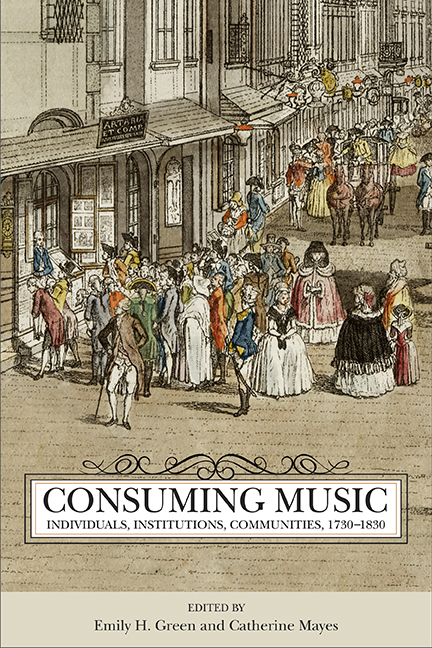Book contents
- Frontmatter
- Contents
- Acknowledgments
- Introduction
- Part One Selling Variety
- Part Two Edifying Readers
- Part Three Marketing the Mundane
- 5 Musical Style as Commercial Strategy in Romantic Chamber Music
- 6 In Vienna “Only Waltzes Get Printed”: The Decline and Transformation of the Contredanse Hongroise in the Early Nineteenth Century
- 7 The Power to Please: Gender and Celebrity Self-Commodification in the Early American Republic
- Part Four Cultivating Communities
- List of Contributors
- Index
5 - Musical Style as Commercial Strategy in Romantic Chamber Music
from Part Three - Marketing the Mundane
Published online by Cambridge University Press: 26 April 2018
- Frontmatter
- Contents
- Acknowledgments
- Introduction
- Part One Selling Variety
- Part Two Edifying Readers
- Part Three Marketing the Mundane
- 5 Musical Style as Commercial Strategy in Romantic Chamber Music
- 6 In Vienna “Only Waltzes Get Printed”: The Decline and Transformation of the Contredanse Hongroise in the Early Nineteenth Century
- 7 The Power to Please: Gender and Celebrity Self-Commodification in the Early American Republic
- Part Four Cultivating Communities
- List of Contributors
- Index
Summary
The mid-nineteenth-century music lover benefited from a wealth of opportunities for casual, recreational music-making. He or she could participate in community choirs, bands, and orchestras and gather around the piano with friends and family to sing and play four-hand piano works or to participate in sonatas and other chamber-music genres. Innovations in manufacturing allowed more middle-class families to purchase instruments of various kinds, and the booming publishing industry provided sheet music for performers of every level and ability. Published arrangements of operas and orchestral music made large-scale works of the past and the present available in even the most remote town or village in Europe. Although studies of music and musical life in the nineteenth century have begun to acknowledge the importance of these wildly varying musical experiences, few have examined the interdependence of consumers and producers of music in this era and the impact of that interdependence on musical style. Practically none have investigated string chamber music. Because the piano and its roles in musical life have been so influential for modern-day understandings of nineteenth-century musical culture, an important segment of the musical public—amateur string players and the composers who wrote for them—has been ignored or neglected by music historians.
This lacuna has led to two common misconceptions that I seek to correct in this chapter and to a startling opportunity overlooked until now. First, string chamber music was far more abundant and influential than most histories of the period allow. Works for three, four, or five string instruments flourished in the 1830s and 1840s and continued to be produced in ever larger numbers through the end of the century. The existence of so much musical material suggests a voracious public appetite for published string quartets and quintets that exceeds all expectations based on modern accounts. The major studies of nineteenth-century music frequently ignore chamber music composed and consumed after the 1820s (notably losing interest after the late quartets of Beethoven), except to comment on the rise of piano quartets and quintets.
- Type
- Chapter
- Information
- Consuming MusicIndividuals, Institutions, Communities, 1730–1830, pp. 127 - 153Publisher: Boydell & BrewerPrint publication year: 2017



